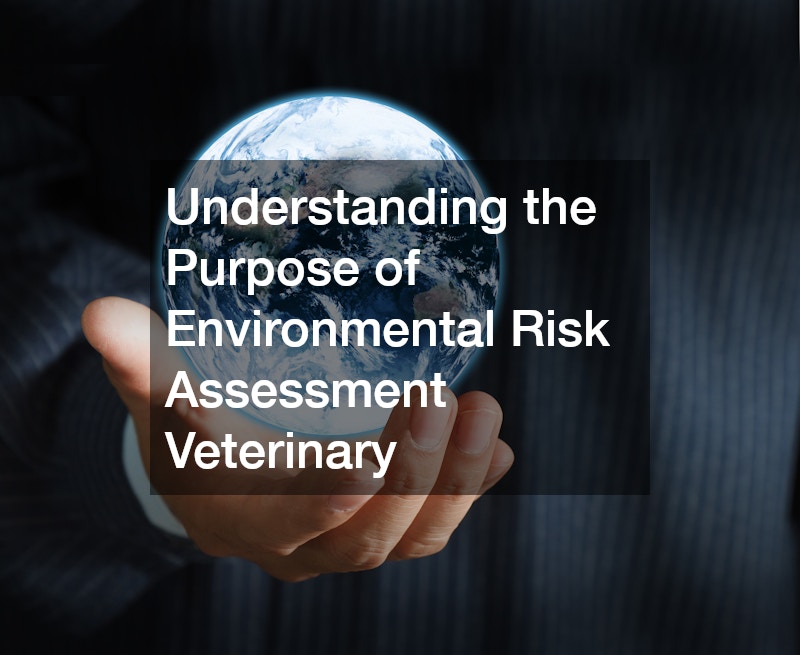
Environmental risk assessments are becoming increasingly crucial in veterinary practice as they help balance animal health with environmental protection and public safety. This expanding role highlights the necessity for veterinary professionals to understand environmental impacts and incorporate risk assessments into their operations. In this article, we will explore environmental risk assessment veterinary purposes.
By integrating environmental considerations, veterinary practices can ensure their activities do not inadvertently harm natural ecosystems. This balance is essential for the long-term sustainability of both animal health services and the environment.
With growing awareness of environmental issues, veterinarians are now playing a more proactive role in safeguarding ecosystems. This commitment not only benefits the environment but also enhances trust among clients and the public.
What is Environmental Risk Assessment in the Veterinary Context?
Definition and Scope
Environmental risk assessments are systematic approaches used to identify and evaluate potential environmental hazards stemming from veterinary activities. These assessments seek to understand the interactions between veterinary practices and the ecosystems in which they operate.
Within veterinary settings, such assessments cover a broad scope, including waste management, use of pharmaceuticals, and biosecurity measures. The primary goal is to mitigate any adverse impacts these might have on the environment.
By understanding these elements, veterinary practices can implement strategies to minimize their ecological footprint. This aligns with the broader objective of promoting sustainable development and biodiversity conservation.
Importance and Relevance
Environmental risk assessments are crucial for ensuring that veterinary practices do not compromise ecosystem health, which is vital for animal well-being. These assessments provide a foundation for making informed decisions that benefit both animals and their habitats.
Failing to conduct such assessments can lead to detrimental impacts, such as pollution and habitat degradation, directly affecting animal welfare. It is through these evaluations that potential risks are identified and mitigated effectively.
Moreover, these assessments contribute to building more resilient ecosystems capable of supporting diverse animal species. This resilience is key to preventing the spread of diseases and maintaining ecological balance.
How Do Environmental Risk Assessments Impact Veterinary Practices?
Influence on Veterinary Policies
Risk assessments play a critical role in shaping veterinary policies by providing data-driven insights into environmental impacts. These insights inform the development and implementation of regulations designed to protect both animal health and environmental integrity.
The integration of risk assessments into policy-making ensures that regulations are grounded in scientific evidence, promoting transparency and accountability. This approach fosters trust among stakeholders and encourages compliance within the veterinary sector.
Furthermore, by influencing policy, environmental risk assessments help embed sustainability into the core practices of veterinary medicine. This encourages a more holistic approach to animal care and ecosystem management.
A Case Study Approach
An illustrative example of the impact of environmental risk assessments can be seen in the regulation of veterinary pharmaceutical use. A thorough risk assessment led to guidelines that minimize the environmental release of these substances while ensuring effective animal treatment.
This case underscores the importance of risk assessments in driving changes that benefit both veterinary practice and environmental health. The outcome not only aligns veterinary services with environmental standards but also enhances their public image.
Such examples demonstrate how environmental considerations can be successfully integrated into veterinary operations, yielding benefits for the ecosystem and animal welfare alike. These successes pave the way for more comprehensive and sustainable practices in the future.
What Are the Steps Involved in Conducting an Environmental Risk Assessment?
Identifying Potential Risks
Identifying potential environmental risks begins with a comprehensive assessment of all veterinary activities that could impact the ecosystem. This phase involves examining processes such as waste disposal, drug usage, and management practices.
By pinpointing areas of concern, veterinary professionals can prioritize actions to mitigate potential hazards. This proactive approach is essential for ensuring that their operations do not adversely affect the environment.
Risk Analysis and Evaluation
Once risks are identified, the next step involves analyzing and evaluating these risks to determine their significance. This process involves assessing the likelihood of adverse outcomes and their potential impacts on the environment.
Through rigorous evaluation, veterinary practices can implement measures tailored to mitigate identified risks effectively. This data-driven approach ensures that resources are allocated efficiently, prioritizing the most pressing concerns.
What Technologies are Used in Environmental Risk Assessment for Veterinary Practices?
Advanced Monitoring Tools
Modern technologies such as sensors and bioindicators are revolutionizing environmental risk assessments in veterinary practices. These tools provide real-time data on environmental conditions, allowing for swift identification of potential hazards.
The use of advanced monitoring tools enhances the precision and reliability of assessments, leading to more accurate risk evaluations. This technological advancement ensures that veterinary practices remain at the forefront of environmental protection.
Data Analysis and Modeling
Data analysis and modeling techniques play a pivotal role in understanding and managing environmental risks associated with veterinary activities. These methods allow for the examination of complex data sets to identify patterns and predict potential outcomes.
Models can simulate different scenarios, helping veterinarians anticipate the effects of various interventions and choose the most effective strategies. This forward-thinking approach is essential in adapting to an ever-changing environmental landscape.
How do Environmental Risk Assessments Benefit Animal and Public Health?
Preventing Disease Outbreaks
Environmental risk assessments are invaluable in anticipating and preventing disease outbreaks that could threaten both animal and human populations. By identifying potential environmental hazards, veterinarians can take proactive measures to mitigate the risks.
This preventive approach is crucial in safeguarding public health and reducing the incidence of zoonotic diseases. It highlights the interconnectedness of environmental health and the well-being of animal and human populations.
Enhancing Sustainable Practices
Environmental risk assessments promote sustainable veterinary practices by identifying opportunities to reduce ecological impact. These assessments encourage the adoption of greener practices that benefit the broader ecosystem.
Incorporating sustainability into veterinary practices helps preserve natural resources and protect biodiversity, ensuring that future generations can enjoy a healthy and balanced environment. Such initiatives are critical for long-term ecological resilience.
.

